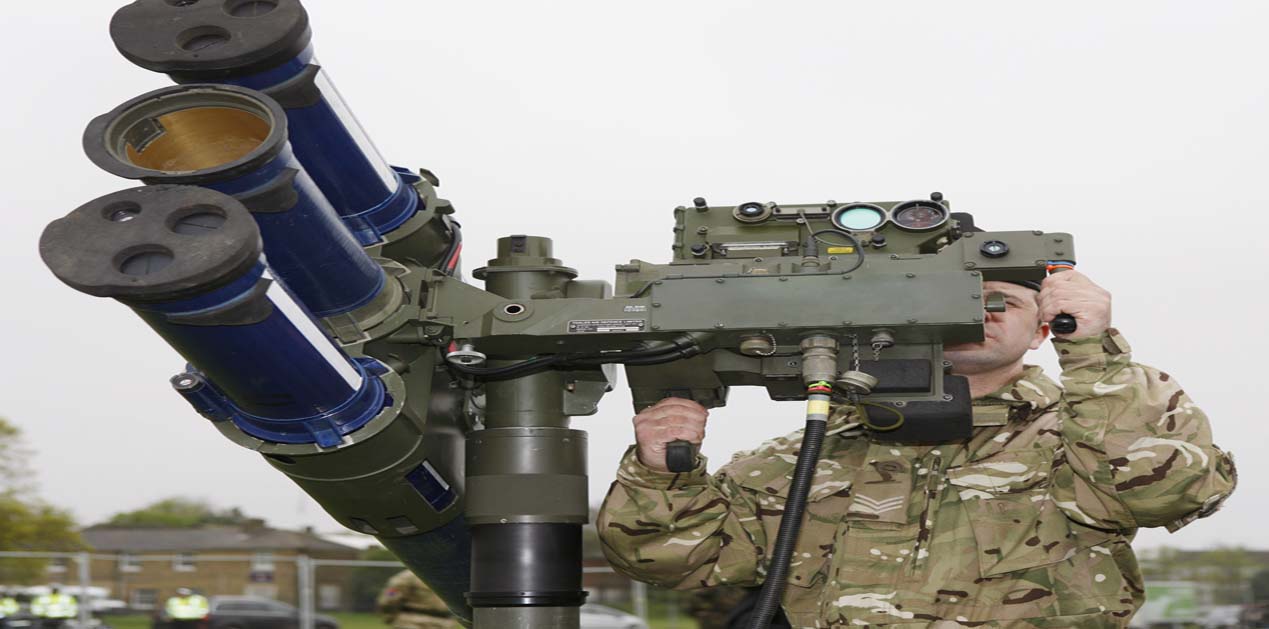Abstract
The ongoing procurement case of Very Short Range Air Defence (VSHORAD) weapon system for the three Services is currently in the news both in the print, as well as, the digital media. Understandably, the information content in both of these platforms, actually plays to the media mileage and 'breaking news' effect, rather than an analysis on the techno-operational aspect of the subject, basically to address the question, WHY VSHORADs? Humbly credited with decades of first hand experience in handling this case, this work presents a User's perspective on why VSHORADS are so critical and, more importantly, where do these find a place in the macro perspective of Ground Based Air Defence ( GBAD).
In order to address the challenges of air threat in the qualitative and quantitative terms, an integrated family of Ground Based Air Defence Weapon Systems (GBADWS) is required. Why integrated family? Simply because a multitude of aerial threat vehicles need to be subjected to effective air defence fires covering the entire spectrum of range and altitude bands; something which is not possible for a single air defence weapon type to achieve.
Also, the punishment with air defence fires needs to be delivered seamlessly from higher to successively shorter range weapons as the aerial threat vehicles draw-in towards their intended targets from far reaches (100 km +) and close on to the terminal end where lethal load are released ( Weapon Release Line). This pattern of deployment of GBADWS, where effective fires can be delivered seamlessly across the entire range and altitude bracket is called the layered and tiered pattern of deployment or Integrated Air Defence System, in short, called the IADS.
IADS thus basically refers to a series of air defence weapons from terminal end to long ranges, tied together in a seamless command and control loop that, as an integrated continuum, is cumulatively capable to defeat an entire spectrum of air threat in qualitative and quantitative terms. In weapon terms, the constituents of this integrated family of GBADWS, comprise of towed and self-propelled guns for the terminal end of deployment, VSHORADS combining with guns providing the gun- missile mix with a coverage up to 6-10 km, Short Range Surface to Air Missiles (SRSAM) providing air defence missile cover up to 20-30 km, Medium Range SAMs (MRSAMs) up to 70-100 km and Long Range SAMs (LRSAMs) for more than 100 km.
Why the gun-missile mix by the VSHORADS at the terminal end of air defence deployment, is a necessity? Simply because a single tier defence by terminal AD guns alone is considered highly inadequate for providing comprehensive cover at the last line of defence which is considered most important. This line will face a determined/smart/techno savvy attacker who has either successfully penetrated and survived in transiting through the multiple layers of missile defence based on its technological muscle of EW, Stealth, or superior avionics and more or has made a surprise attack taking advantage of any of the multiple factors say terrain and (or) weather. The near absence of the VHORADS alongside the terminal guns at this last line of defence is a big operational necessity.
Gun missile combinations at the terminal phase was considered essential ever since the concept of layered defence started to take shape. That was decades back. what is the threat scenario now?
Today is an era of fifth generation jet fighters that made their appearance in 2014. Credited with such amazing features like all-aspect stealth, Low Probability of Intercept Radar or LPIR for short, high performance airframes that are structurally higher and stronger with minimal Radar Cross Section (RCS), thanks to nano technologies, high advanced avionics with a capability to network across dissimilar platforms in a net centric domain, array of on board sensors to provide a high degree of immunity and hence survivability in a hostile Electronic Warfare (EW) environment; and armed to the teeth with precision arsenal capable of being delivered from long standoff ranges to take out that proverbial needle from the haystack.
In fact the buzz today is of the sixth generation; the famous F-X programme to replace the F-22 in the time frame 2025-30 or the USN Next Generation Air Dominance to replace the FA/18 Super Hornets, the Shengyang Aircraft Corporation of China launching research and development (R&D) to develop the next generation of its J-31 FGFA, while the Russians work on their sixth unmanned fighter aircraft - the successor of T-50 (PAK FA) - among others. This is the era of unmatched manoeuvrability, superior weapons and targeting and the magic of near or total invisibility.
A week last line of defence makes the entire chain that much weak. In specific terms, VSHORADS achieve the following, when deployed in consort with terminal guns
• Provide multiplicity of fire power in that, the cumulative hit probability of gun rounds get a paradigm increase in overall effect when combined with the SSKP and CKP of the VSORADS.
• Most of the VSHORADS being quick reaction (fire-and forget heat seeking/ beam riding et al), such weapons prove to be ideal in suddenly appearing threats - typical of attack helicopters suddenly appearing from the Nap of The Earth having succeeded in dodging the sensor shooter cover all along ( not that easy, as it sounds though!)
• In weighted deployments, where some typical approaches cannot be covered by conventional layout of guns, (especially in mountainous/ high altitude areas) VSHORADS prove to be ideal in covering such approaches since deployment time and space requirement is never an issue with them.
• VSORADS give a disproportionate advantage in range, reach and target handling capability of terminal layouts by deploying the missiles unconventionally and innovatively way forward, along the likely avenues.
• If a typical (and in some cases, inevitable, being solitary) approach to a VA/VP, passes through a constrained volume of space owing to terrain, VSHORADS are ideal to lie-in-wait in the air ambush role.
• The surveillance capability brought along by the VSHORAD subunits/detachments greatly enhances the overall effectiveness of those gun-missile deployed Fire Units where the guns are fair weather.
• Different types of air attack profiles featuring a slew of guided/unguided(conventional) weapons with a fair mix of smart and intelligent arsenal of today, require a range, height and fire effect coverage (implying effectiveness) that goes well beyond the typical capabilities of towed and self-propelled guns in the last line.
• Faced with the current threat scenario a skeleton gun-only terminal defence of critical and highly vulnerable VAs/VPs is simply inadequate and operationally deficient. The same is likely to be found wanting on multiple parameters of range, reach, accuracy, effectiveness, throw weight and total fire effect in the face of determined attacker
So much for the inescapability of the VSHORADs, but where is our case????. It is not the intention of the author to go into the nitty-gritty's of the Indian VSHORAD procurement case currently in progress or the claims and counterclaims of the players or the comparative merit/demerit in each case etc., but simply to recount the following from the open source1:-
• The tri Service procurement case started in 2010 when the RFP was issued for a huge consignment of 800 launchers and 5500-6000 missiles.
• Three vendors are in the fray, namely, MBDA (France), Rosoboronexport (Russia) and SAAB (Sweden) with their VSHORADS, namely Mistral 2, Igla S and RBS 70 NG respectively.
• The Field evaluation trials started in 2012.
• After a series of trials and re-trials gone through earlier, each one of which threw up some observations or the other, the case is currently at re-trial stage.
• Open sources report that since the Field Evaluation Trials (FETs) are now being sought by the Indian customer in a move to carry out and conclude the fullest evaluation of the competing options, the Defence Procurement Procedures (DPP) 2016 requires that all the competing vendors are given a further and equal chance to prove their products’ capabilities to meet the Indian requirement2
Whatever be the results of the re trials, the bottom-line is, that the urgent operational requirement of the VSORADs cannot be over emphasised. It is the sense of the author that while the higher range and reach GBADWS along with their associated BMC2 systems are essential for providing the upper contours of a layered and tiered defence as a part of IADS cutting across Service lines, the last line of defence must not be devoid of its critical punch of effectiveness in the face of the current and the futuristic air threat.
We are already five years down the line, any more delay will be a very costly on all fronts.
Endnotes
1. http//www. idrw.org/indias-vshorad-modernisation-programme-yet-to-take-off/. Accessed on 24 Nov 15
2. https://www.livefistdefence.com/2017/04/can-indian-complete-biggest-air-defence-deal-this-month-good-question.html
Image Source: https://www.pinterest.com









Post new comment